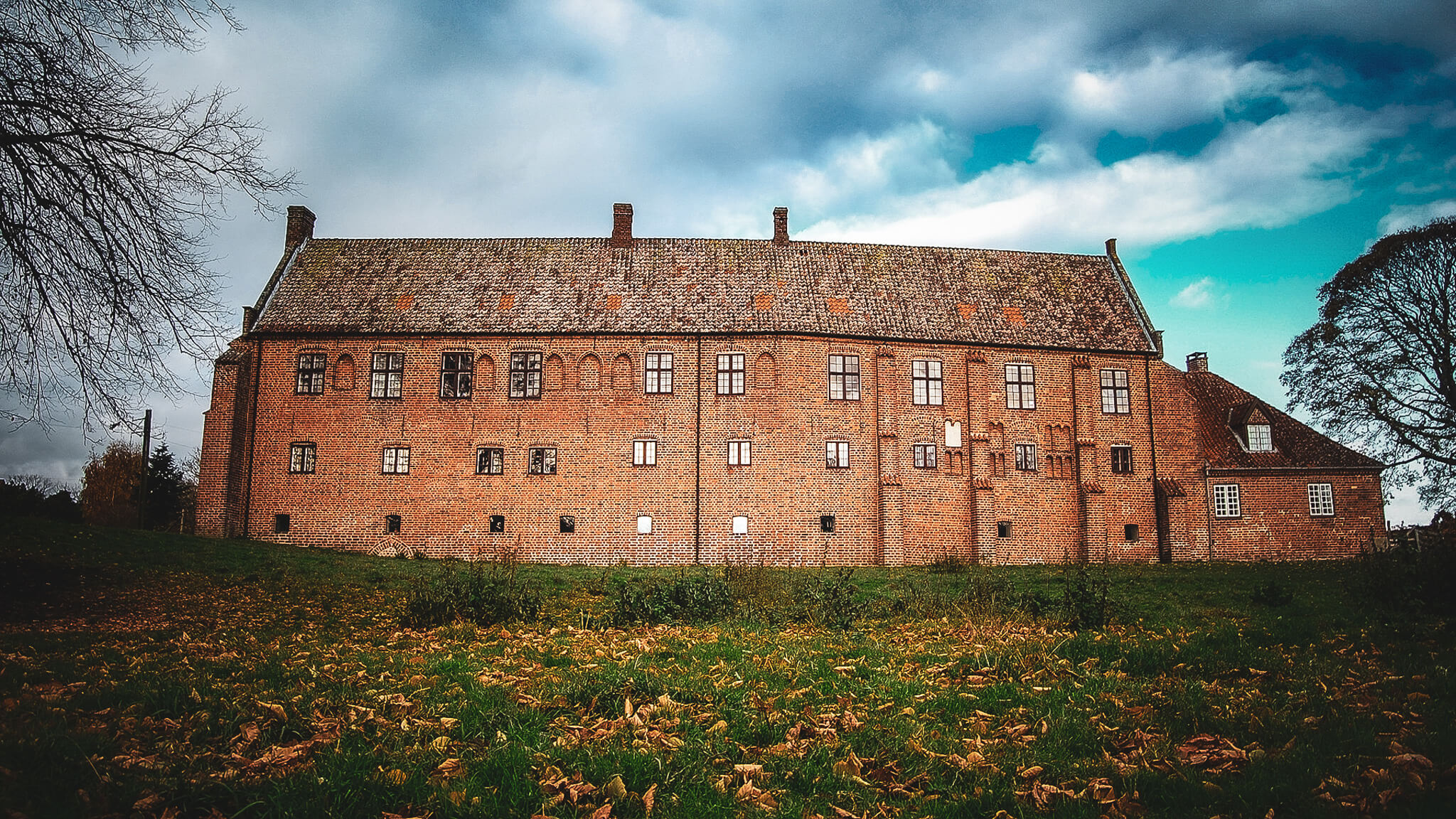Esrum Kloster & Møllegård
We are a cultural-history-based experiential attraction in North Zealand
Esrum Kloster houses various exhibitions about the Cistercian order and the powerful status of the abbey during the Middle Ages. Møllegården consists of a café, an abbey shop and a watermill. Esrum Kloster & Møllegård is home to the Kilden Foundation, a socio-economic enterprise, and the head office of the Royal North Zealand National Park.
Our vision
The vision of Esrum Kloster & Møllegård is to be a place for everyone – a place where cultural heritage and nature experiences merge. We preserve and mediate the cultural and natural heritage of the site: its buildings, nature and landscape. We create experiences that make an impact on our visitors – experiences that relate to social structure and power structures, human existence and natural resources. Together with partners and volunteers, we offer a programme of experiences throughout the year – on regular weekdays, during school holidays and in the lead up to Easter, Christmas etc.
Three themes
The abbey was a centre of power for both the Cistercian order and the royal family. Within the abbey, the monks devoted their lives to religion, while nature played a crucial role for everyone who ever lived there. So, social structure and balance of power, human existence and natural resources are the focus of all experiences at Esrum Kloster & Møllegård today.
Human existence
For the monks of Esrum Kloster, the question of existence was at the top of their agenda. They were bound together by faith in the Christian God and their life mission: to pray on behalf of others and secure their salvation after death. When a monk entered the community, he renounced his identity and dedicated his life to the Cistercian order to which the abbey belonged. When the monks left the abbey, new people and new cultures moved in, all with different values and outlooks on life. When we recount these people’s stories, we spotlight the human aspect. Who were they? What did they believe in? Who did they want to be?
Social structures and the balance of power
Many of the institutions associated with the area over the past 900 years were, in various ways, an important part of the Danish social structure and power elite. During the Middle Ages, the abbey had great economic and political power. The monks of Esrum belonged to the central power structure of society. They were well educated and possessed important knowledge: this also invested them with power. After the Reformation, the monks moved out and royalty moved in, converting the abbey into a hunting lodge. Since then, the abbey has served many functions for a variety of social authorities. We tell our visitors about the power structures and communities of the place, and the major historical changes to the social structure both in the past and the present.
Nature’s resources
All the people associated with the area made a great impact on the nature and the landscape. Over the years, the numerous resources – Esrum Sø, the river, the meadows, the woods and the fertile agricultural land – were exploited by monks, kings and farmers. The monks used the water in their water mills, and the woods were a source of fuel. When the king took over the place, the area’s resources were still utilised and, after Møllegården was established, the mill operated for the next centuries. We convey how nature is a resource for people past and present, and how people protect, advise and (attempt) to determine the fate of nature.
Our aim is to constantly inspire people to reflect on relevant existential issues.
